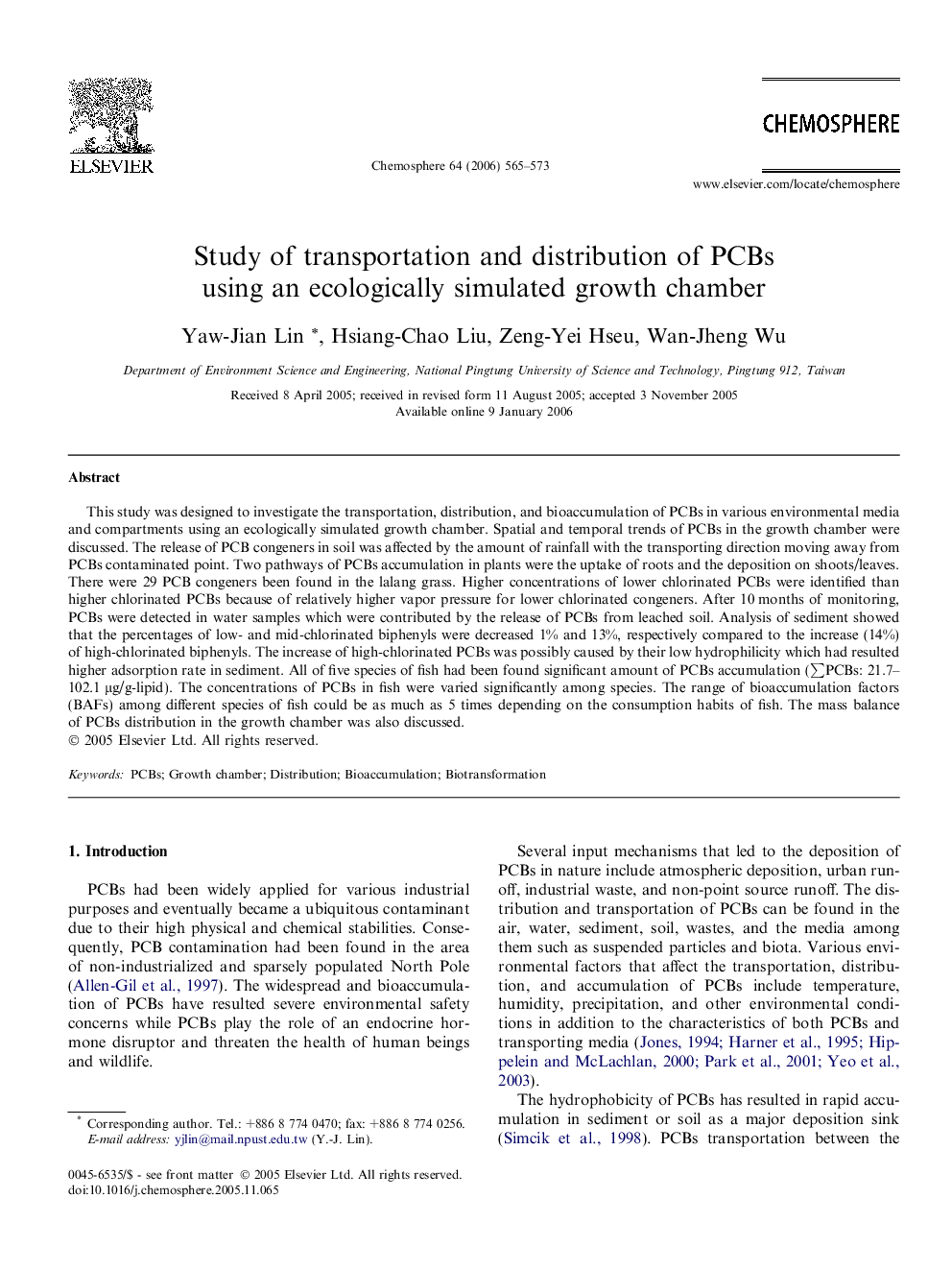| Article ID | Journal | Published Year | Pages | File Type |
|---|---|---|---|---|
| 4416537 | Chemosphere | 2006 | 9 Pages |
This study was designed to investigate the transportation, distribution, and bioaccumulation of PCBs in various environmental media and compartments using an ecologically simulated growth chamber. Spatial and temporal trends of PCBs in the growth chamber were discussed. The release of PCB congeners in soil was affected by the amount of rainfall with the transporting direction moving away from PCBs contaminated point. Two pathways of PCBs accumulation in plants were the uptake of roots and the deposition on shoots/leaves. There were 29 PCB congeners been found in the lalang grass. Higher concentrations of lower chlorinated PCBs were identified than higher chlorinated PCBs because of relatively higher vapor pressure for lower chlorinated congeners. After 10 months of monitoring, PCBs were detected in water samples which were contributed by the release of PCBs from leached soil. Analysis of sediment showed that the percentages of low- and mid-chlorinated biphenyls were decreased 1% and 13%, respectively compared to the increase (14%) of high-chlorinated biphenyls. The increase of high-chlorinated PCBs was possibly caused by their low hydrophilicity which had resulted higher adsorption rate in sediment. All of five species of fish had been found significant amount of PCBs accumulation (∑PCBs: 21.7–102.1 μg/g-lipid). The concentrations of PCBs in fish were varied significantly among species. The range of bioaccumulation factors (BAFs) among different species of fish could be as much as 5 times depending on the consumption habits of fish. The mass balance of PCBs distribution in the growth chamber was also discussed.
